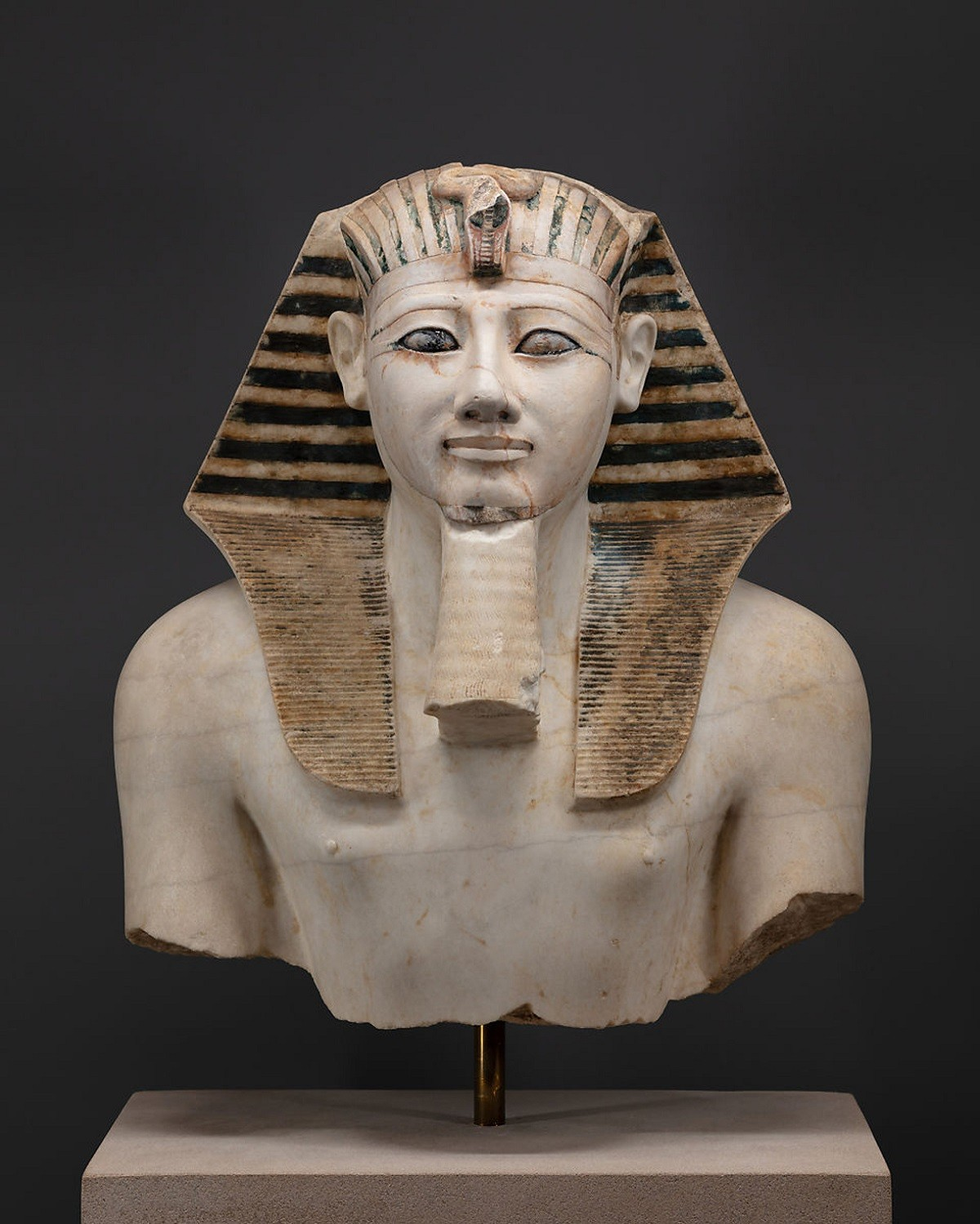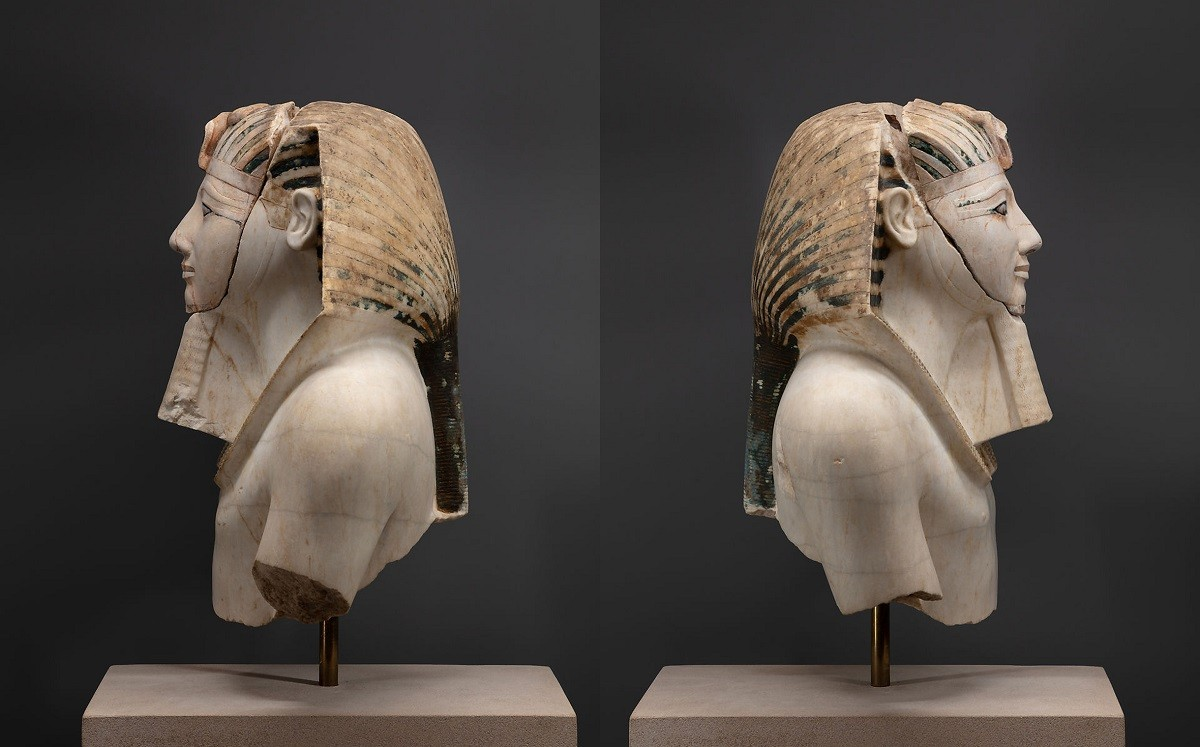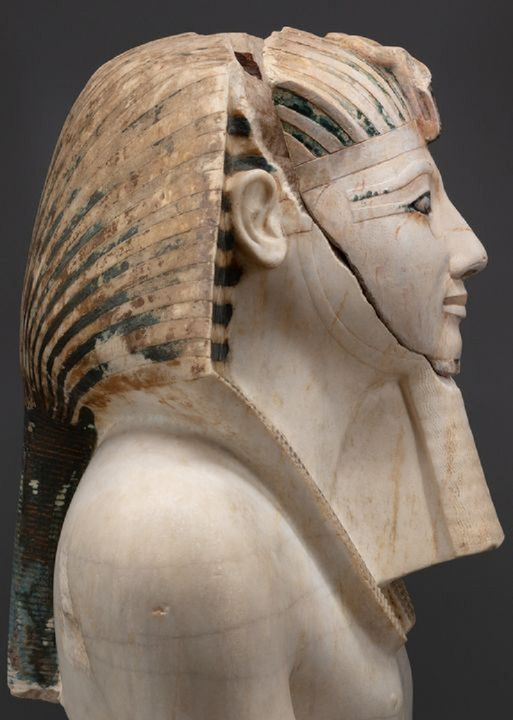In the annals of ancient Egyptian history, few rulers left a mark as indelible as Thutmose III, the warrior pharaoh of the New Kingdom’s 18th Dynasty. Among the tangible testaments to his reign is the remarkable indurated painted limestone statue of Thutmose III, a masterpiece crafted during his rule, approximately between 1479 and 1425 B.C. This stunning sculpture, discovered at Deir el-Bahri, within the confines of the Temple of Mentuhotep II (the destroyed temple of Thutmose III) in Upper Egypt, serves as a poignant reminder of the pharaoh’s enduring legacy.

However, the story of this statue of Thutmose III is not one of unification but rather of division and reconciliation. Despite its majesty, this sculpture is sadly torn between two nations, its upper body and Nemes headdress residing in the Metropolitan Museum of Art in New York, while its original face finds its home in the Egyptian Museum, Cairo. Yet, despite the physical separation, museum curators have managed to bring the two parts together, albeit through photographs and documentation, allowing visitors to appreciate the statue in its entirety.

The statue of Thutmose III stands as a testament to the skill and artistry of ancient Egyptian craftsmen, who imbued their creations with a sense of grandeur and majesty befitting their pharaoh. Carved from indurated painted limestone, the statue captures the essence of Thutmose III’s reign, depicting him in regal attire and with an expression that exudes power and authority. Every detail, from the intricate hieroglyphs adorning the base to the delicate features of the pharaoh’s face, speaks to the meticulous craftsmanship of its creators.

As visitors marvel at the statue of Thutmose III and contemplate its significance, they are transported back in time to the golden age of ancient Egypt. The statue’s presence in museums around the world serves as a reminder of the enduring fascination with Egyptology and the timeless appeal of its treasures. Despite the physical distance between its components, the statue continues to inspire awe and wonder, captivating the imagination of all who behold it.

In conclusion, the indurated painted limestone statue of Thutmose III stands as a symbol of the enduring legacy of one of ancient Egypt’s greatest pharaohs. Its divided state serves as a poignant reminder of the complexities of cultural heritage and the challenges of preserving it in a globalized world. As we continue to explore the mysteries of ancient civilizations through archaeology, we gain a deeper appreciation for the richness and diversity of human history, and the timeless beauty of artifacts like the statue of Thutmose III.

Archaeology continues to play a crucial role in uncovering the secrets of the past and preserving our cultural heritage for future generations. Through meticulous excavation and study, archaeologists strive to unravel the mysteries of ancient civilizations, shedding light on their achievements, customs, and traditions. The discovery and preservation of artifacts like the statue of Thutmose III not only enriches our understanding of history but also serves as a reminder of the enduring legacy of those who came before us.


